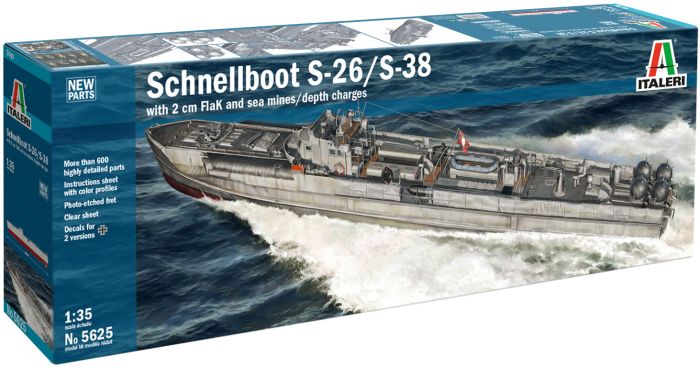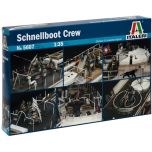Italeri 1/35 Schnellboot S-26/S-38 # 5625
Between the two wars, several Navies undertook development programs to implement flotillas of motor torpedo boats capable of carrying out patrol and attack missions.
The new engine technologies, compared to First World War versions, provided greater performance and operational efficiency.
During the 1930s the German Kriegsmarine developed the famous S-class motor torpedo boats.
Between 1939 and 1940 the S-26 series was built and characterised by a forecastle integrated with two 533 mm torpedo tubes.
The aesthetic features of the bow were maintained and further improved in subsequent versions.
The S38 was one of the most celebrated Schnellboot versions, with almost 100 units produced.
They were 35 meters long with a full load displacement of over 100 tons.
With its Daimler Benz 12-cylinder engines it was able to reach a maximum speed of 39.5 knots.
The Schnellboot S-26/S-38 refers to a series of German fast attack craft (Schnellboote) used by the Kriegsmarine (German Navy) during World War II.
These boats were designed for high speed and agility, primarily for coastal operations and the harassment of enemy shipping.
The Schnellboot S-26/S-38 series was an evolution of earlier designs, with improvements in speed, armament, and overall performance.
They were typically armed with torpedoes for attacking larger ships and a variety of anti-aircraft guns for defense against aircraft.
The boats were known for their sleek and aerodynamic design, which allowed them to achieve high speeds.
The S-26/S-38 boats played a significant role in the naval warfare of the time, particularly in the English Channel and the Mediterranean.
They were well-suited for hit-and-run attacks, disrupting enemy supply lines, and engaging larger naval vessels.
These fast attack craft were powered by multiple engines, enabling them to reach impressive speeds and quickly evade pursuit.
Their design also incorporated stealth features to minimize their visibility to enemy radar.
The Schnellboot S-26/S-38 series, along with other German fast attack craft, demonstrated the effectiveness of this type of vessel in specific tactical scenarios.
While they became less relevant as the war progressed and air superiority shifted, their impact on naval warfare during the early and mid-stages of World War II is notable.
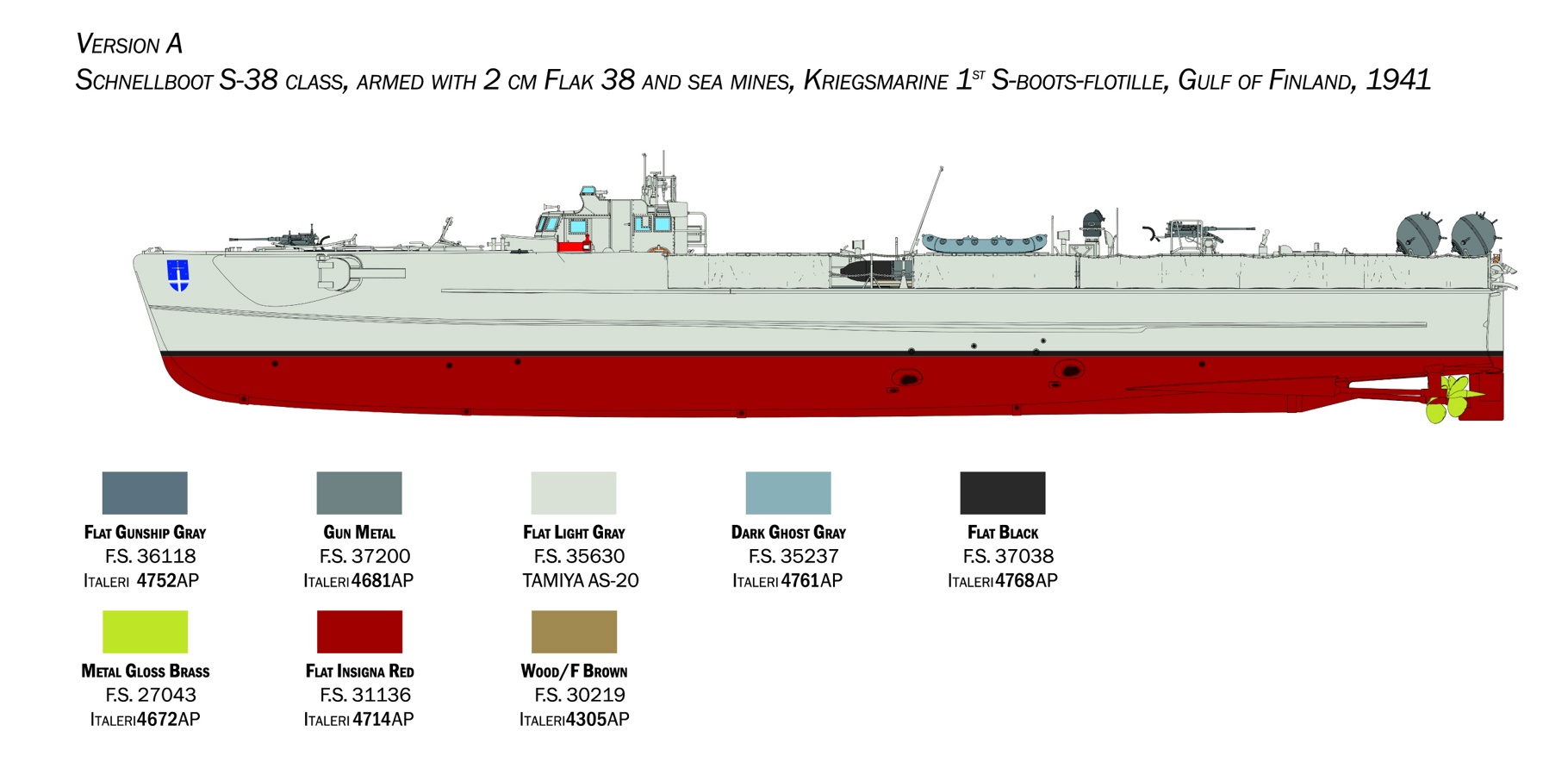

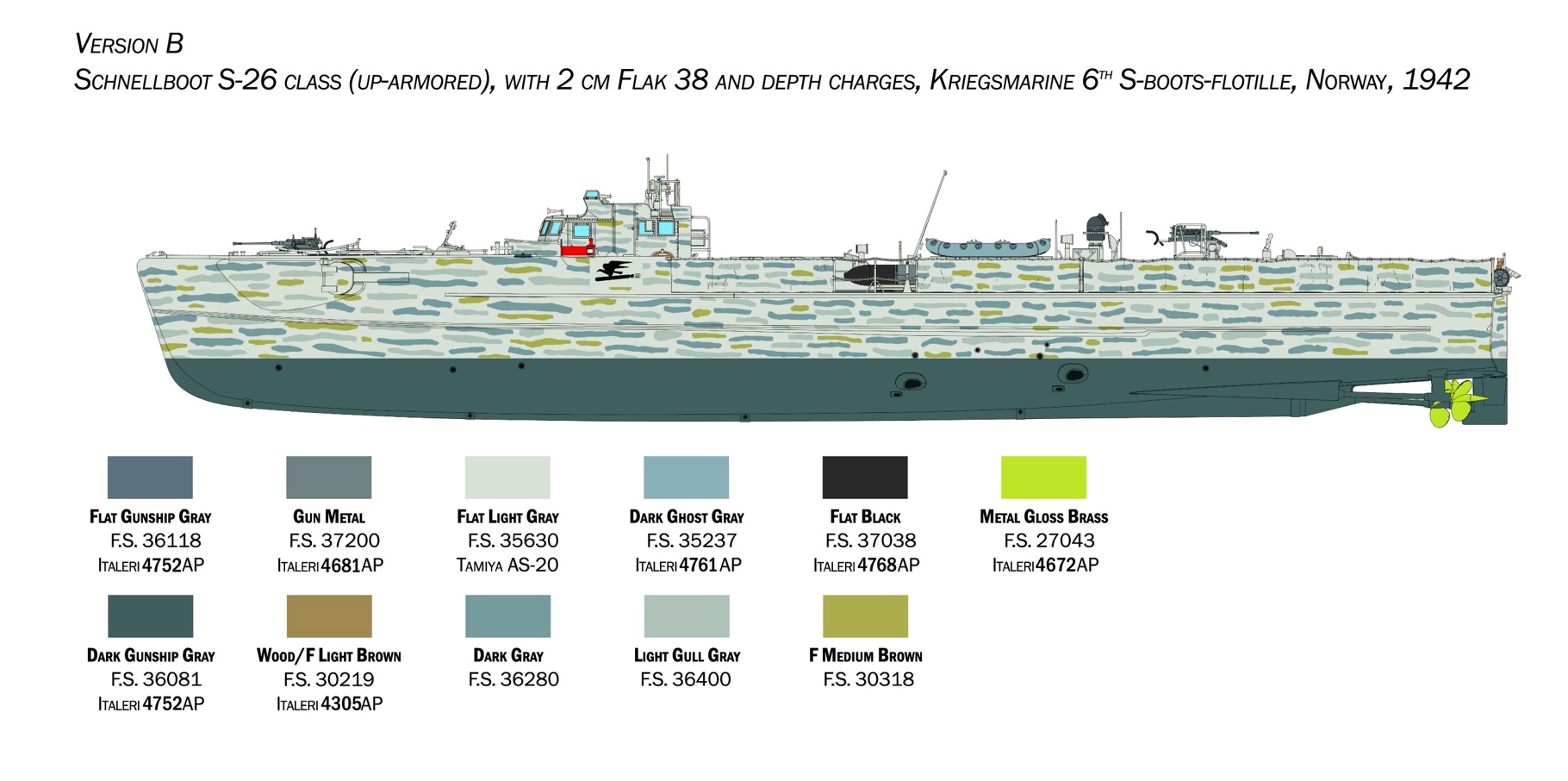








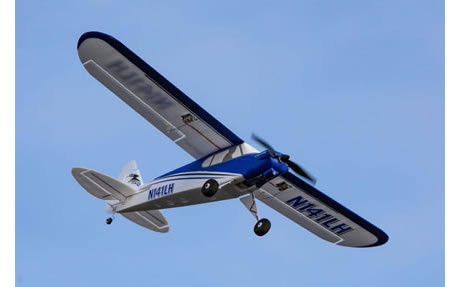











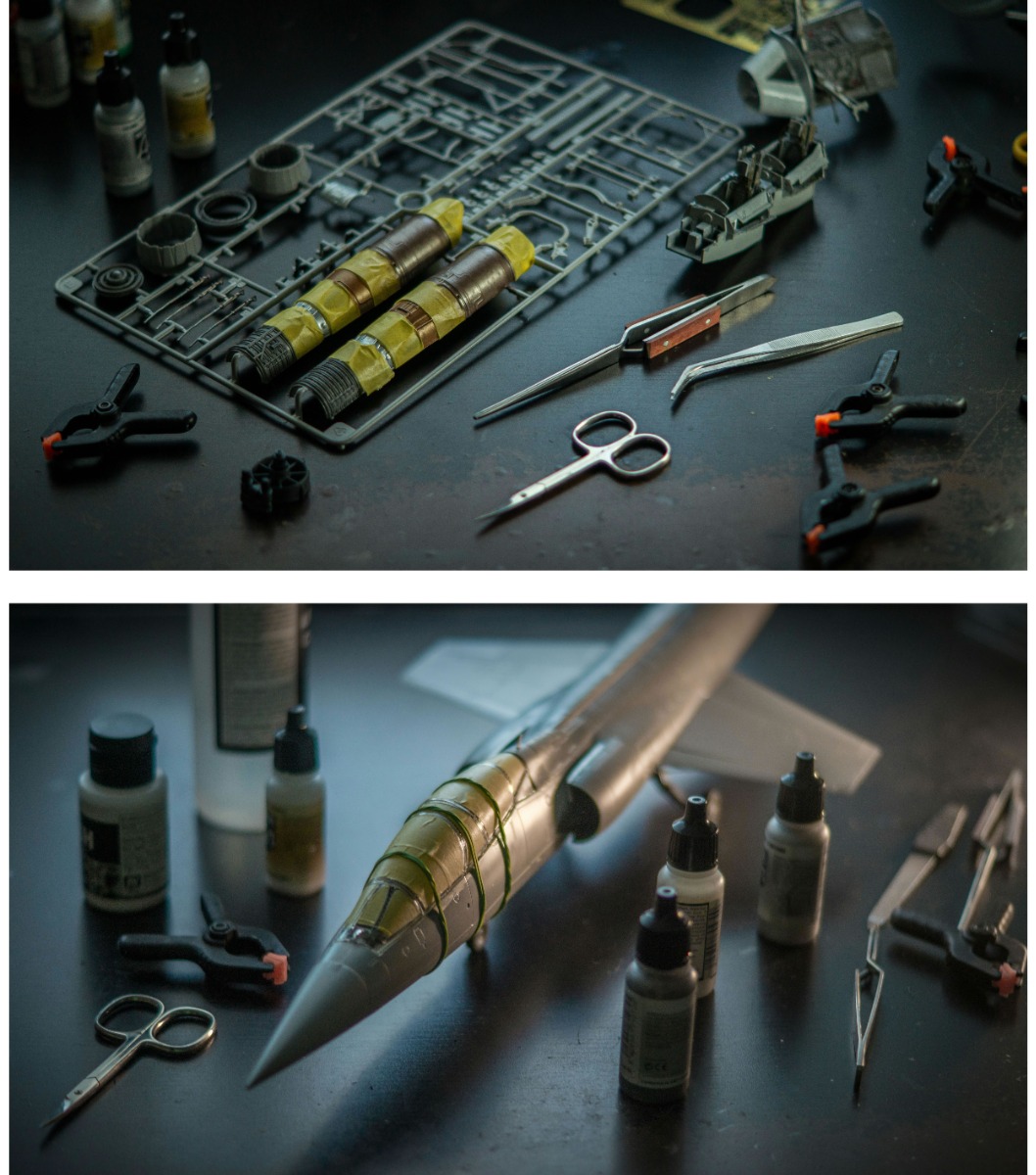
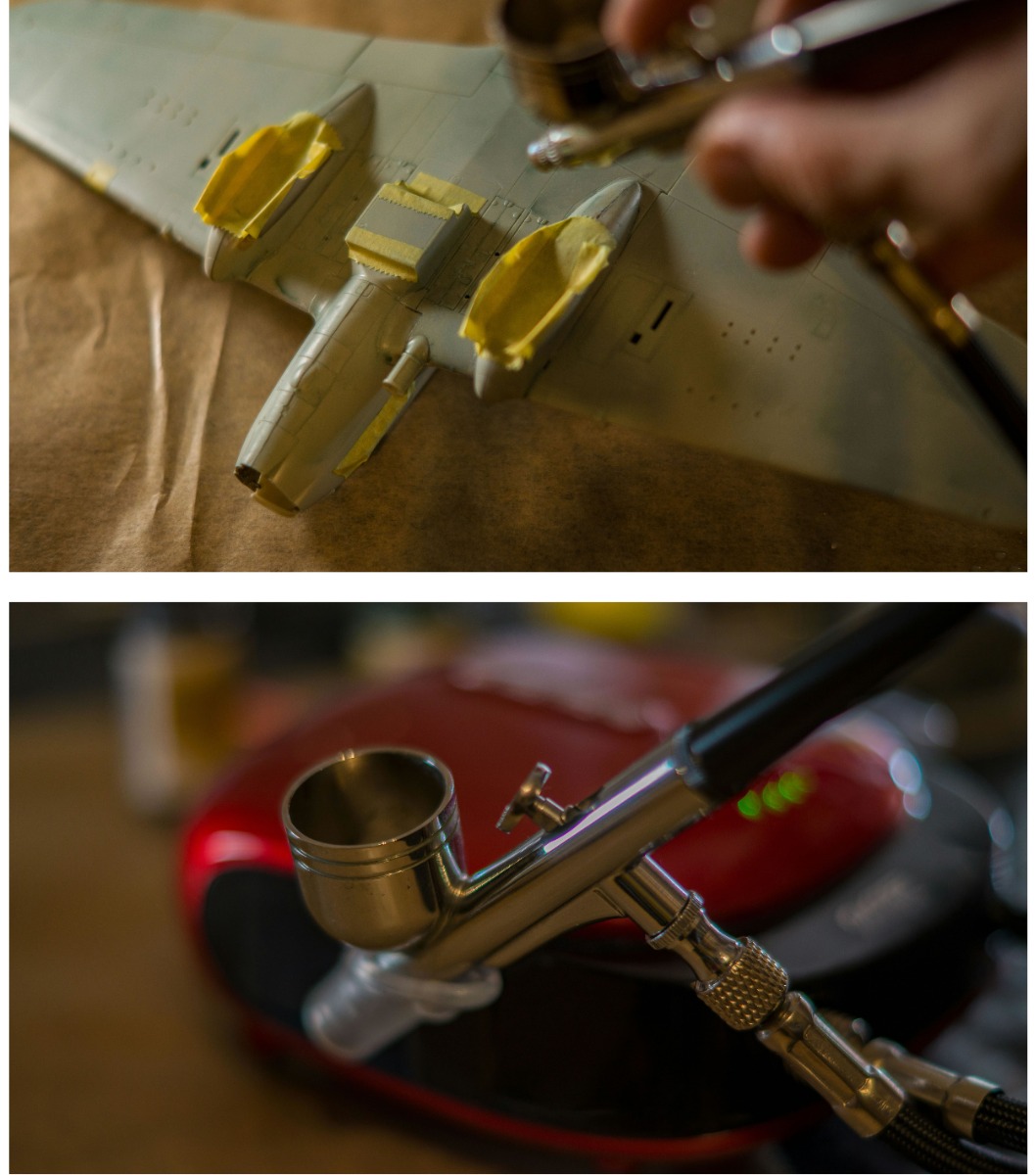
 Spread the cost with Paypal Credit
Spread the cost with Paypal Credit
 Spread the cost with Klarna
Spread the cost with Klarna

